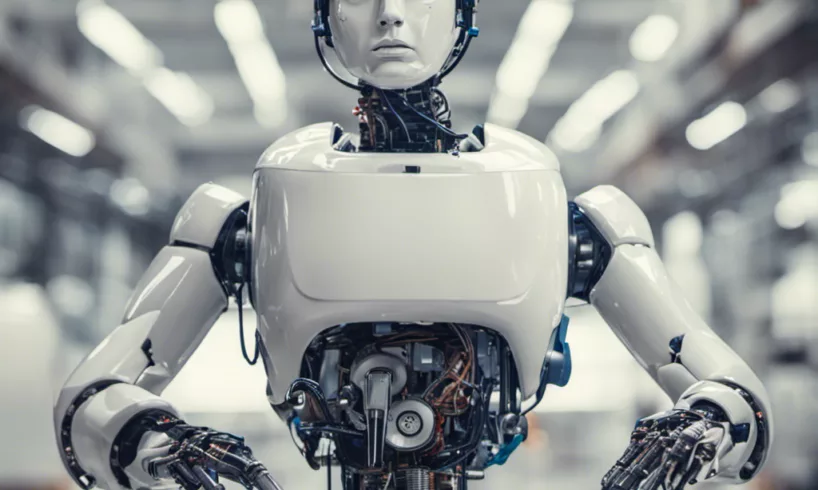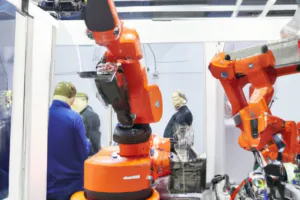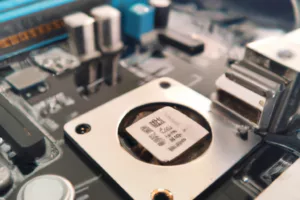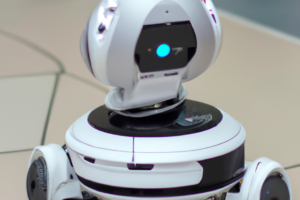
Robotics is transforming our world in incredible ways. From manufacturing to healthcare, robotics is enhancing efficiency, reducing errors, and taking us deeper into space exploration. This article delves into the fascinating evolution of robotics, the anatomy and types of robots, their vast applications, and the exciting future.
A Brief History of Robotics
The origins of robotics trace back centuries to early automatons and machines aimed at replicating human motion. In the 1400s, Leonardo da Vinci sketched designs for a mechanical knight capable of independent motion. The first true automaton, The Flute Player, was built in 1810 with camshafts driving its limbs and head.
Throughout the 19th and 20th centuries, advances in manufacturing, computing, and electronics drove robotics forward. In 1961, the first industrial robot, Unimate, started work on a General Motors assembly line. This paved the way for robots in manufacturing.
Milestones like Shakey the robot in 1966 and the Stanford Cart in 1979 demonstrated autonomous navigation and intelligence. The 1980s brought robots into homes through toys like the Sony Aibo. Today, exponential progress in artificial intelligence, sensors, and actuators makes robots more capable than ever across industries.
Key Milestones
- 1495 – Leonardo da Vinci designs a mechanical knight
- 1810 – The Flute Player automaton mimics a human
- 1920s – Word “robot” coined, early fictional portrayals
- 1961 – First industrial robot, Unimate, deployed by GM
- 1966 – Shakey robot platforms AI and navigation
- 1970s – Robotic arms for welding painting in factories
- 1979 – Stanford Cart navigates obstacles autonomously
- 1980s – Emergence of commercial robots like Sony Aibo
- Today – AI and advanced sensors drive new capabilities
Robotics promises to be one of the most transformative technologies of our time. As researchers worldwide push boundaries, robots grow increasingly intelligent, elegant, and autonomous.
Anatomy of a Robot
Robotics integrates concepts from mechanical engineering, electrical engineering, computing, and more to design capable machines. Here are the key components that make up a robot:
Mechanical Systems
This includes the structural elements and moving parts. The endoskeleton provides a frame for attaching components. Arms and grippers allow the manipulation of objects. Wheels or legs enable mobility. Sensors provide input about the environment.
Electrical Systems
These supply power and control signals. Motors/actuators drive movement through gears, hydraulics, or direct drives. Microcontrollers execute routines and process data. Wiring links electrical systems—batteries store power.
Software and Control
Algorithms dictate robot actions—programming languages like Python code robot behavior. Control systems modulate the speed and torque of motors. Artificial intelligence, like neural networks, enables advanced capabilities like computer vision.
As technological capabilities grow, robots are built with more sophisticated components. Advanced materials shape lighter, stronger platforms. Sensors obtain richer data. AI algorithms interpret information and make decisions. This synergy enables next-generation robots. For a more in-depth article about the anatomy of a robot.
Categories of Robots
There are many ways to categorize robots based on capabilities, environments, and applications. Here are some of the most common robot types:
Industrial Robots
These automate manufacturing, optimizing speed, precision, and reliability. Typical applications include assembly, pick-and-place, welding, painting, and materials handling. Global sales of industrial robots hit record highs in 2021.
Service Robots
Service robots assist humans in professional settings. Healthcare robots support surgeries, deliver supplies, disinfect rooms, and assist patients. Hospitality robots greet guests, deliver amenities, and handle luggage. Retail robots scan shelves, check inventory, and clean floors.
Personal Robots
These robots engage with individuals, often in home settings. They provide companionship, home assistance, education, and entertainment. Famous examples include vacuum cleaners, toy robots, pet bots, edutainment bots, and home assistance robots for seniors.
Professional Service Robots
Professionals rely on these robots to access challenging environments and conduct tasks precisely. Defense robots neutralize bombs, conduct surveillance, and traverse rough terrain. Surgical robots have dexterous instruments for minimally invasive procedures. Space robots explore distant planets.
Autonomous Robots
These robots make decisions independently using AI and machine learning. Self-driving vehicles autonomously navigate roadways. Warehouse robots optimize logistics. Drones automate inspections and surveillance. Autonomy allows robots to operate alone and adapt to changing conditions.
As technological barriers lower, robots grow more intelligent, interactive, agile, and autonomous. Continued progress across research labs and companies brings us closer to a future of capable robotic assistants.
Applications of Robotics
Robotics is transforming a diverse range of industries. Robots assist us on production lines, in operating rooms, within disaster zones, and beyond. Here are some significant applications.
Manufacturing and Logistics
- Automate repetitive and dangerous production line tasks like welding, painting, assembly
- Enable precise quality control and defect detection
- Optimize supply chains via automated warehousing and delivery
- Enhance speed, precision, safety, and efficiency
Healthcare
- Assist surgeries through enhanced dexterity, motion control, and visualization
- Support rehabilitation using robotic exoskeletons and prosthetics
- Provide companionship and home assistance for elderly patients
- Disinfect patient rooms using UV light to prevent infections
Transportation
- Self-driving vehicles to increase roadway safety and efficiency
- Unmanned aerial vehicles for delivery services, emergency response, and more
- Warehouse robots to optimize logistics and inventory management
- Enhanced navigation for passenger and transit vehicles
Exploration
- Space robots to gather data, prep launch pads, assist astronauts
- Underwater robots for deep sea exploration and data collection
- Drones to survey disaster-struck regions, hazardous sites
- Robots tailored for exploration despite communication lags
Education
- Interactive tutoring robots provide personalized instruction
- Lifelike robots teach languages through immersive conversations
- Programmable bots that let students grasp coding basics
- Assistive robots to engage special needs students
Robotics will continue transforming our lives in surprising ways across industries. With more investment and research, robots grow increasingly intelligent and specialized to serve our needs.
The Future of Robotics
The field of robotics is rapidly evolving. Here are some exciting developments taking shape:
More Advanced AI
- Algorithms like deep learning will enable pattern recognition, decision-making
- Cloud robotics allows real-time access to vast datasets
- Intelligent navigation in dynamic environments
Enhanced Sensors
- Lightweight, high-res imaging for visual data processing
- Multi-modal tactile sensors for precision manipulation
- Sensors for sound, temperature, vibration and more
Human-Robot Interaction
- Natural language processing for fluid communication
- Intuitive interfaces and training for seamless teamwork
- Safety features for trusted physical collaboration
Robot Swarms
- Coordination algorithms for large groups of simple robots
- Applications in construction, disaster response, space exploration
- Emergent intelligence through collaboration
Robot Ethics
- Developing moral frameworks for autonomous decision-making
- Transparent AI rationale for building trust
- Policies for fair, safe integration into society
Robotics will transform homes, workplaces, transportation systems, and entire economies. To ensure positive impacts, research and policies must keep pace with innovation. The future of robotics brings possibilities to make our lives more convenient, productive, and exciting.
Conclusion
Robotics has transformed dramatically from early automatons to the capable machines of today. With advanced AI, sophisticated sensors and actuators, and agile platforms, robots can take on increasingly complex tasks. Robotics is enhancing industries from manufacturing to surgery while bringing us closer than ever to a world of intelligent assistants.
There are immense opportunities – and also risks – as robotics advances. Maintaining responsible, ethical development is critical as robots integrate further into our lives. With an optimistic and balanced approach, we can maximize the vast potential of robotics to improve medicine, explore new frontiers, make discoveries, and enrich society. The future of automation is unfolding through robotics, and it promises to be an exciting ride.

George Smith, with over a decade in tech journalism, excels in breaking down emerging tech trends. His work, spanning tech blogs and print, combines in-depth analysis with clarity, appealing to a wide readership. George's pieces often explore technology's societal impact, showcasing his foresight in industry trends.







